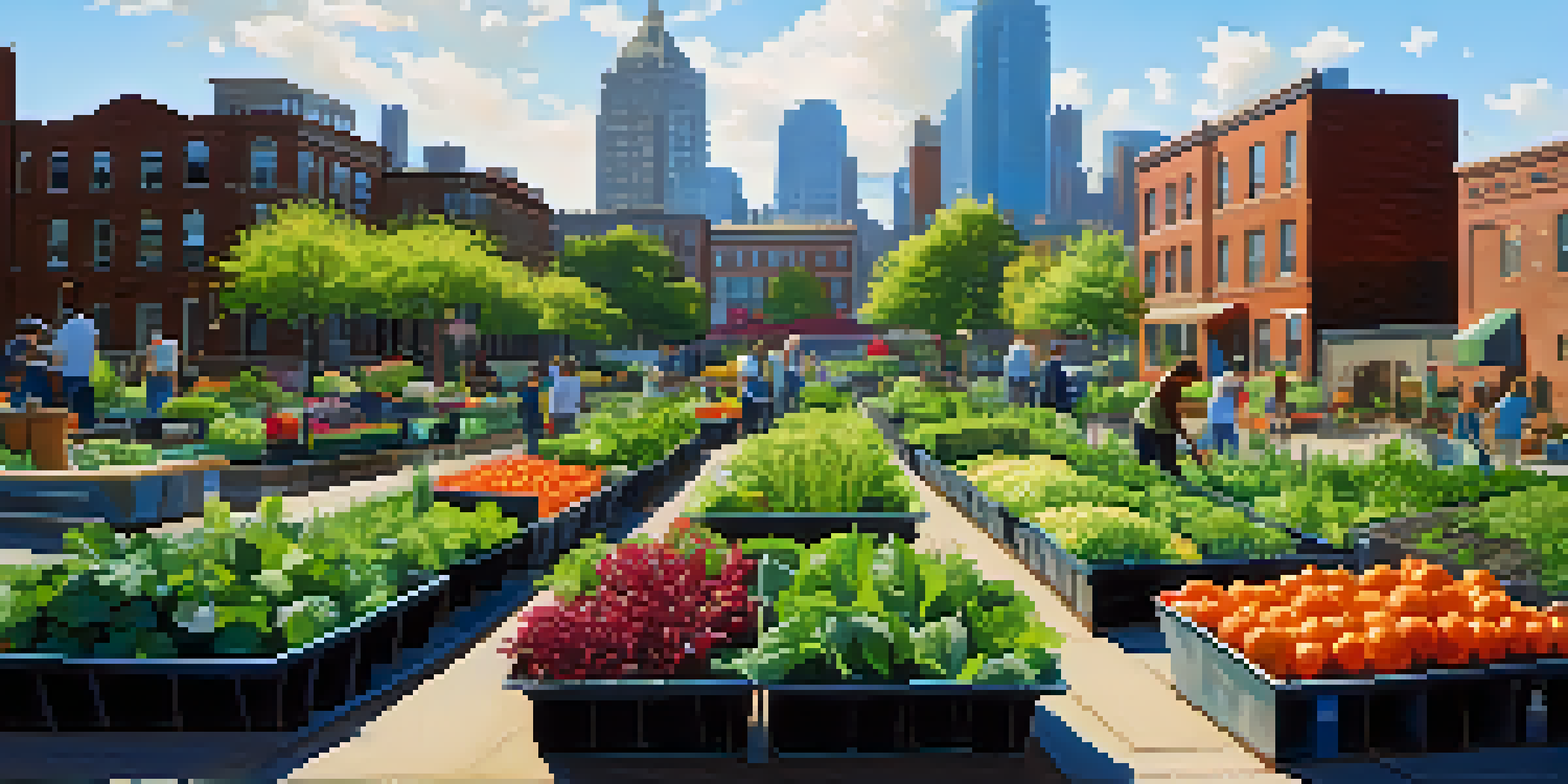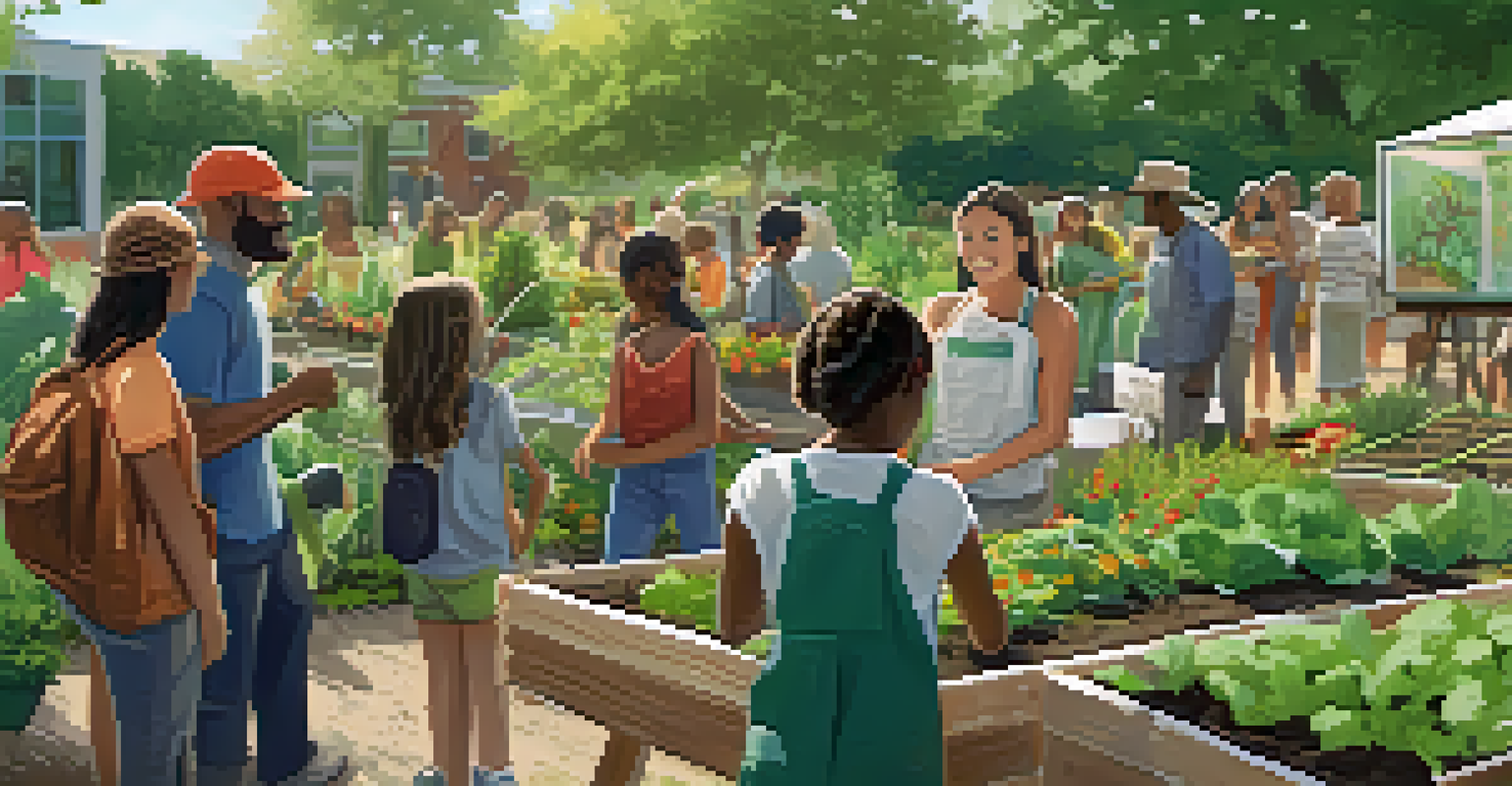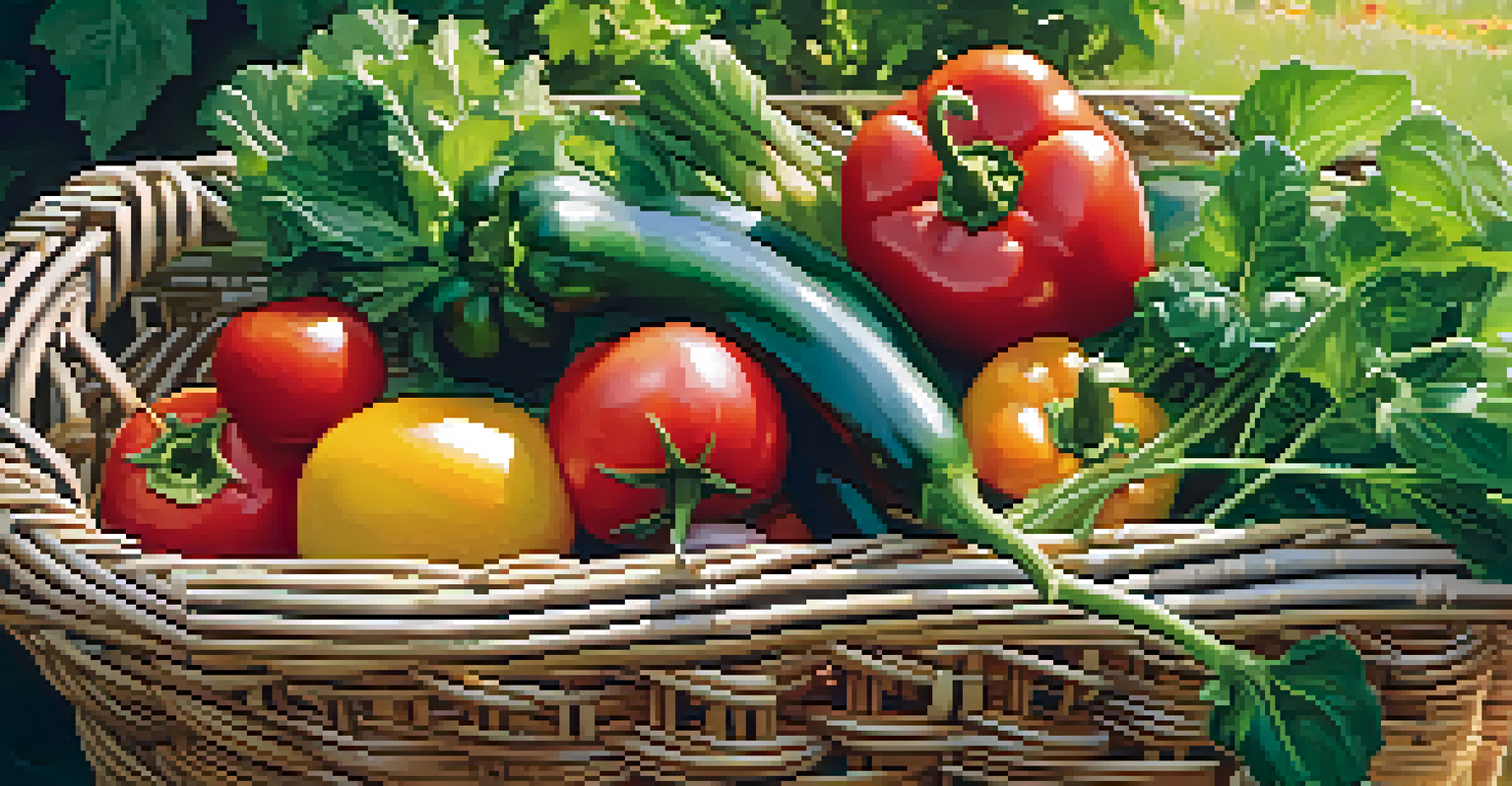How Community Gardens are Transforming Arizona’s Food Systems

The Rise of Community Gardens in Arizona
In recent years, community gardens have blossomed across Arizona, providing residents with a way to connect with nature and each other. These gardens not only beautify neighborhoods but also serve a vital role in local food systems. Many communities, especially in urban areas, are transforming vacant lots into vibrant gardens filled with fruits and vegetables.
The love of gardening is a seed once sown that never dies.
As more people become aware of food deserts—areas with limited access to affordable and nutritious food—community gardens are stepping in to fill the gap. They offer fresh produce right at the doorstep, which can significantly improve the diet of local residents. This grassroots movement is not just about growing food; it’s about growing community.
Moreover, these gardens often become hubs for education and skill-sharing, teaching people about sustainable farming practices. As individuals learn to grow their own food, they also gain insight into nutrition and the benefits of eating fresh, local produce. This knowledge is invaluable in fostering a healthier population.
Enhancing Food Security Through Local Production
Food security is a pressing issue in many parts of Arizona, and community gardens are playing a crucial role in addressing it. By cultivating local food sources, these gardens help to ensure that families have access to fresh produce, reducing reliance on imported foods. This local production not only supports the community but also strengthens the local economy.

Community gardens empower residents to take control of their food supply, which is particularly important in areas where grocery stores are scarce. By providing a space for individuals to grow their own vegetables, these gardens help to alleviate some of the challenges associated with food insecurity. It’s a simple yet effective solution that fosters resilience.
Community Gardens Improve Food Access
Community gardens provide fresh produce and enhance food security in urban areas, especially in food deserts.
Additionally, many community gardens collaborate with local food banks to supply fresh produce to those in need. This partnership not only helps to combat hunger but also raises awareness about the importance of healthy eating. When communities come together to support one another, everyone benefits.
Fostering Community Engagement and Connection
Community gardens are more than just places to grow food; they are spaces that foster engagement and connection among residents. People from diverse backgrounds come together, united by a common goal—growing food for themselves and their neighbors. This collaboration builds social ties that strengthen the fabric of the community.
In every community, there is work to be done. In every nation, there are wounds to heal. In every heart, there is the power to do it.
Through regular meetings and shared responsibilities, participants develop friendships and a sense of belonging. These relationships often extend beyond the garden, creating a network of support that enhances community life. When people work together, they not only cultivate plants but also cultivate a sense of pride in their neighborhood.
Events such as harvest festivals or planting days further encourage community bonding. These gatherings celebrate the shared achievements and provide opportunities for residents to learn from one another. As a result, community gardens become vibrant centers of social interaction.
Promoting Sustainable Practices in Urban Settings
Sustainability is at the heart of many community gardens, where environmentally friendly practices are embraced. From composting to water conservation, these gardens often utilize methods that minimize waste and reduce environmental impact. This hands-on approach teaches participants about the importance of sustainability in food production.
For instance, many gardens implement drip irrigation systems to conserve water, which is particularly vital in Arizona's arid climate. This not only helps the gardens thrive but also sets an example for responsible water use in the community. Residents learn that small changes can lead to significant benefits for the environment.
Fostering Community Through Gardening
These gardens create social connections and engagement among residents, strengthening community ties and pride.
Moreover, by growing organic produce, community gardens reduce the reliance on pesticides and chemical fertilizers. This commitment to organic gardening not only helps to protect local ecosystems but also promotes healthier eating habits among residents. It’s a win-win for both people and the planet.
Educational Opportunities in Community Gardens
Community gardens serve as valuable educational resources, providing hands-on learning experiences for people of all ages. Workshops on gardening techniques, nutrition, and cooking are often offered, empowering participants with the knowledge to make healthier choices. This educational focus can have a lasting impact on individuals and families.
Schools are also getting involved, with many gardens partnering with local educational institutions to create programs for students. These initiatives not only teach children about growing food but also instill a sense of responsibility and stewardship toward the environment. When children learn the importance of food systems at a young age, they carry that knowledge into adulthood.
Additionally, community gardens can host events such as farm-to-table dinners, where residents can taste the fruits of their labor. These gatherings create a deeper connection to the food they eat and encourage a greater appreciation for local produce. Education in community gardens is about more than just gardening; it’s about cultivating a healthier community.
Economic Benefits of Community Gardens
Community gardens can also have a positive impact on local economies. By growing their own food, residents can save money on groceries, allowing families to allocate their resources to other essential needs. This economic relief can be especially beneficial for low-income households.
Moreover, some gardens turn excess produce into profit by selling at local farmers' markets or through community-supported agriculture (CSA) programs. This not only creates income for the gardeners but also keeps money circulating within the community. Local food systems strengthen economic resilience and create sustainable livelihoods.
Sustainability and Education Combined
Community gardens promote sustainable practices and offer educational opportunities about nutrition and gardening.
Additionally, community gardens can increase property values in their surrounding areas. Green spaces are often seen as desirable, and neighborhoods with active community gardens may attract new residents looking for a vibrant community. The economic benefits extend beyond just food; they contribute to the overall prosperity of the area.
Challenges Facing Community Gardens in Arizona
Despite the numerous benefits, community gardens in Arizona often face challenges that can hinder their growth and sustainability. One of the primary issues is access to land, as securing space in urban areas can be difficult and competitive. Many community gardens rely on partnerships with local organizations or city governments to obtain land for their projects.
Additionally, funding is a significant concern. While many community gardens operate on a shoestring budget, they often need financial support for tools, seeds, and maintenance. Grants and donations can help, but securing consistent funding can be a daunting task. Without financial stability, the future of these gardens may be at risk.

Finally, community gardens must navigate the complexities of local regulations and policies. Zoning laws can sometimes restrict garden activities, and gardeners need to stay informed about any changes that could impact their operations. Advocacy and community support are essential to overcoming these hurdles and ensuring the longevity of community gardens.
The Future of Community Gardens in Arizona
The future of community gardens in Arizona looks promising, with increasing interest and support from local governments and organizations. As awareness of food insecurity and sustainability grows, more people are recognizing the potential of these gardens. Community gardens are becoming integral to conversations about food systems and urban agriculture.
Innovative projects are emerging, such as vertical gardens and hydroponics, which maximize space and resources. These trends not only make gardening more accessible but also inspire creativity in food production. As technology evolves, community gardens can adapt to meet the needs of a changing environment.
Ultimately, community gardens represent a movement toward a more sustainable and connected future. By continuing to grow and evolve, these spaces can empower individuals, strengthen communities, and transform Arizona's food systems for generations to come.